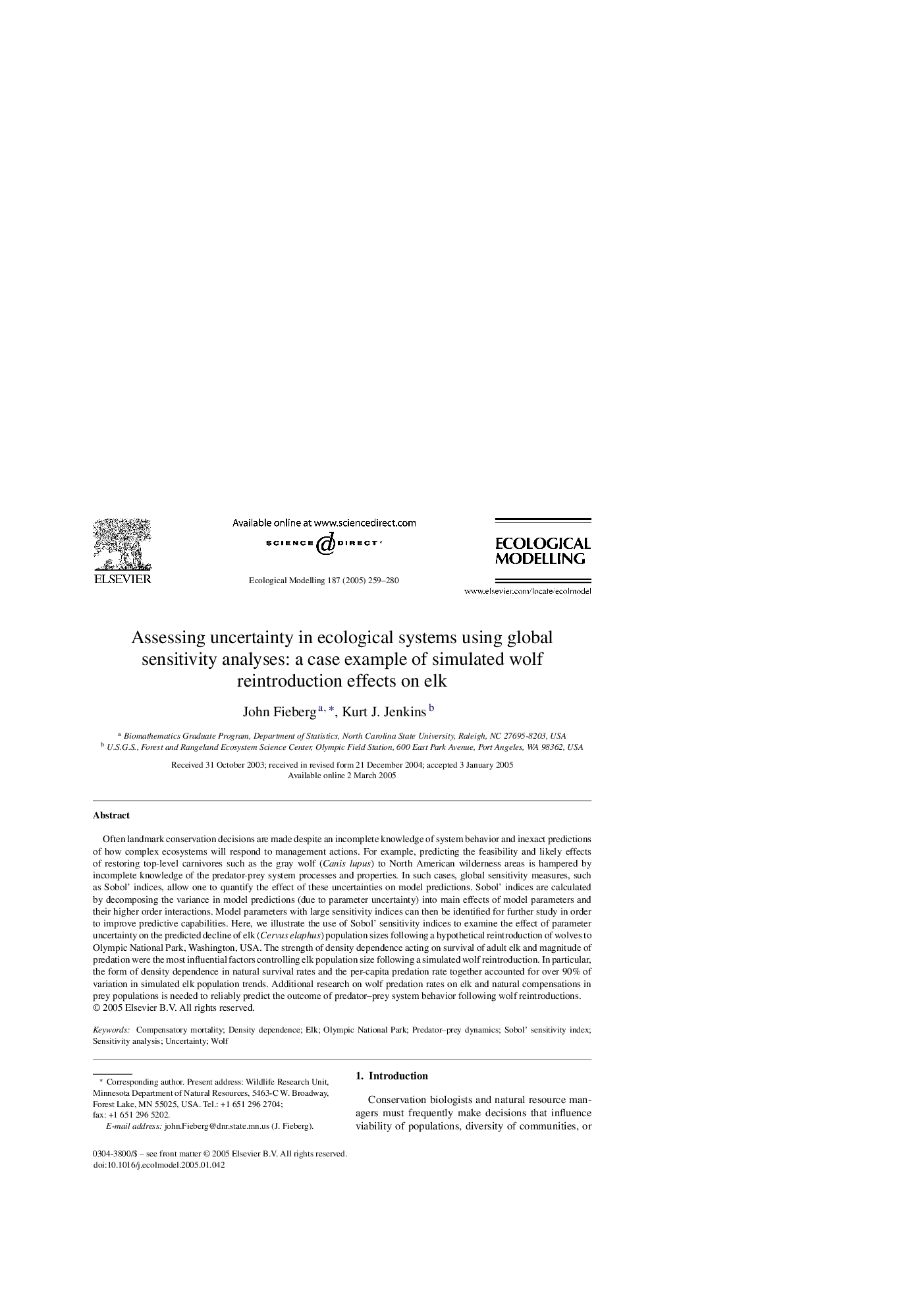| Article ID | Journal | Published Year | Pages | File Type |
|---|---|---|---|---|
| 9443349 | Ecological Modelling | 2005 | 22 Pages |
Abstract
Often landmark conservation decisions are made despite an incomplete knowledge of system behavior and inexact predictions of how complex ecosystems will respond to management actions. For example, predicting the feasibility and likely effects of restoring top-level carnivores such as the gray wolf (Canis lupus) to North American wilderness areas is hampered by incomplete knowledge of the predator-prey system processes and properties. In such cases, global sensitivity measures, such as Sobol' indices, allow one to quantify the effect of these uncertainties on model predictions. Sobol' indices are calculated by decomposing the variance in model predictions (due to parameter uncertainty) into main effects of model parameters and their higher order interactions. Model parameters with large sensitivity indices can then be identified for further study in order to improve predictive capabilities. Here, we illustrate the use of Sobol' sensitivity indices to examine the effect of parameter uncertainty on the predicted decline of elk (Cervus elaphus) population sizes following a hypothetical reintroduction of wolves to Olympic National Park, Washington, USA. The strength of density dependence acting on survival of adult elk and magnitude of predation were the most influential factors controlling elk population size following a simulated wolf reintroduction. In particular, the form of density dependence in natural survival rates and the per-capita predation rate together accounted for over 90% of variation in simulated elk population trends. Additional research on wolf predation rates on elk and natural compensations in prey populations is needed to reliably predict the outcome of predator-prey system behavior following wolf reintroductions.
Related Topics
Life Sciences
Agricultural and Biological Sciences
Ecology, Evolution, Behavior and Systematics
Authors
John Fieberg, Kurt J. Jenkins,
